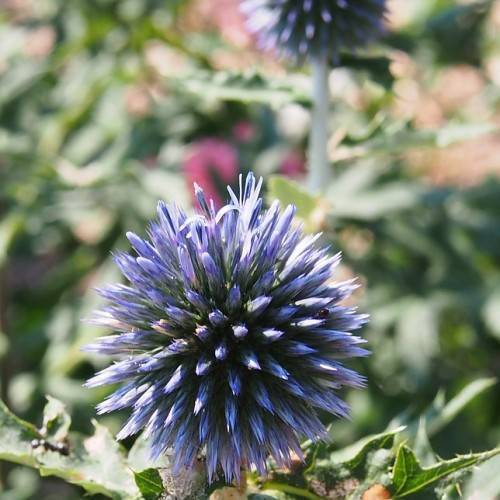
small globe thistle
Echinops ritro 'Veitch's Blue'
Cycle:
Herbaceous Perennial
Watering:
Minimum
Hardiness Zone:
3 - 8
Flowers:
Flowers
Sun:
Full sun
Leaf:
Yes
Growth Rate:
Low
Maintenance:
Low
Drought Tolerant:
Yes
Salt Tolerant:
Yes
Thorny:
Yes
Care Level:
Moderate
watering
Small globe thistle (Echinops ritro 'Veitch's Blue') will require moderate watering with slightly less as it matures. During the spring and summer months, water your small globe thistle when the top 1-2 inches of soil become dry; during the winter season, water much less, usually only when the top 2-3 inches of soil become dry. Be sure to avoid overwatering, as this can cause the plant to become root-bound, resulting in stunted growth and yellowing foliage.
sunlight
Small Globe Thistle is a sun-loving perennial that can thrive in direct, full sun. It should get at least 6 to 8 hours of sunlight per day. To encourage flowering and maintain its impressive coloration, Small Globe Thistle plants need to be in a sun-drenched location. If it does not have access to direct sun, it can also tolerate part shade, but it will still benefit from some direct sun for several hours a day.
pruning
Small globe thistle (Echinops ritro 'Veitch's Blue') should generally be pruned in late summer or early fall once the flower heads have died back. Depending on the desired size and shape of the plant, pruning can range from lightly deadheading the flowers and removing any dead or damaged shoots to a heavy cutback of up to 2-thirds of the stems. Keeping the overall shape of the plant in mind, begin by trimming away any growth that has flopped or is damaged, and then gradually reduce the size of the plant by working from the outside of the plant inwards, until the desired shape is achieved. If just deadheading the flowers, do not cut too deeply as this can open up the plant to disease and damage. Finally, cut away old shoots at the base to encourage new, fresh growth.
